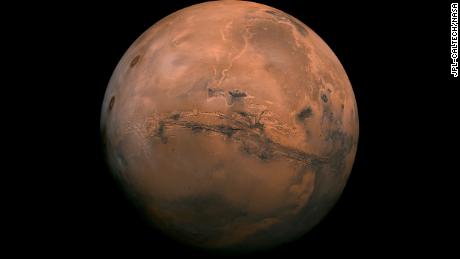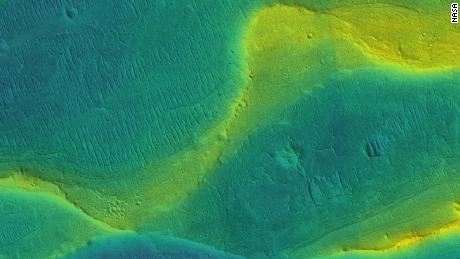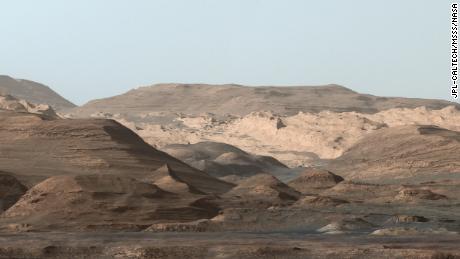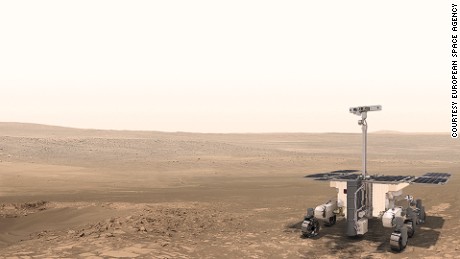(CNN)Last year, a dust storm encircled Mars for months, ending NASA's Opportunity mission when sunlight couldn't reach the solar-powered rover.
But other NASA spacecraft orbiting the Red Planet, like the Mars Reconnaissance Orbiter, were able to track valuable information about the storm that's helping scientists understand the phenomenon.
The data sent back by the orbiters revealed dust towers within the 2018 storm. Dust towers occur when dust clouds react to the warmth of the sun and rise vertically. The gigantic clouds can climb incredibly high due to the thin atmosphere. They're also very dense.
The towers are created when a large area of dust, which can be compared to the width of Rhode Island, lifts up into the air. The dust grows into a tower 50 miles high and spreads out to span the width of Nevada, according to NASA. When the tower falls apart, the dust layer -- which remains 35 miles up from Mars' surface -- could span the entire United States in width.
The dust towers don't require a global dust storm, which affects the whole planet, to form, but there are many more of them during the global storms -- and the churning towers could last for weeks.
"Normally the dust would fall down in a day or so," said Nicholas Heavens, one of the study authors at Hampton University. "But during a global storm, dust towers are renewed continuously for weeks."
It's even possible that water vapor trapped in the dust could essentially catch a ride on the towers and pass through Mars' thin atmosphere into space. There, the water would be broken apart by solar radiation, according to NASA. Researchers believe this is one possible explanation for the disappearance of water that could once be found on Mars billions of years ago.
Although Mars seems cold and inhospitable today, it was a different story three to four billion years ago. A 2019 study suggests that the Red Planet was once warm enough to host rainstorms and flowing water, which would have created an environment that could support simple life.
The knowledge of water on ancient Mars has been common for years, but its form was up for debate. Scientists were unsure whether the water was trapped in ice or it actually flowed over the surface. There was also uncertainty over the duration of flowing water if temperatures were warm enough to allow it.
A warm surface with flowing water supports the idea that life could have formed independently on the planet's surface.
Water vapor appears on Mars today as thin, wispy clouds. So if heated dust is traveling upwards, it could carry gases and water vapor with it. Previous research has shown it's possible for global dust storms on Mars to send water up into the air.
Dust storms are common on Mars, but planet-encircling storms are more rare. This is why it's so difficult for scientists to understand them.
"Global dust storms are really unusual," said David Kass, Mars Climate Sounder scientist at NASA's Jet Propulsion Laboratory. "We really don't have anything like this on the Earth, where the entire planet's weather changes for several months."
























































